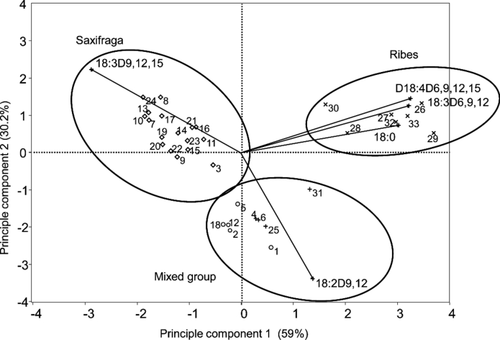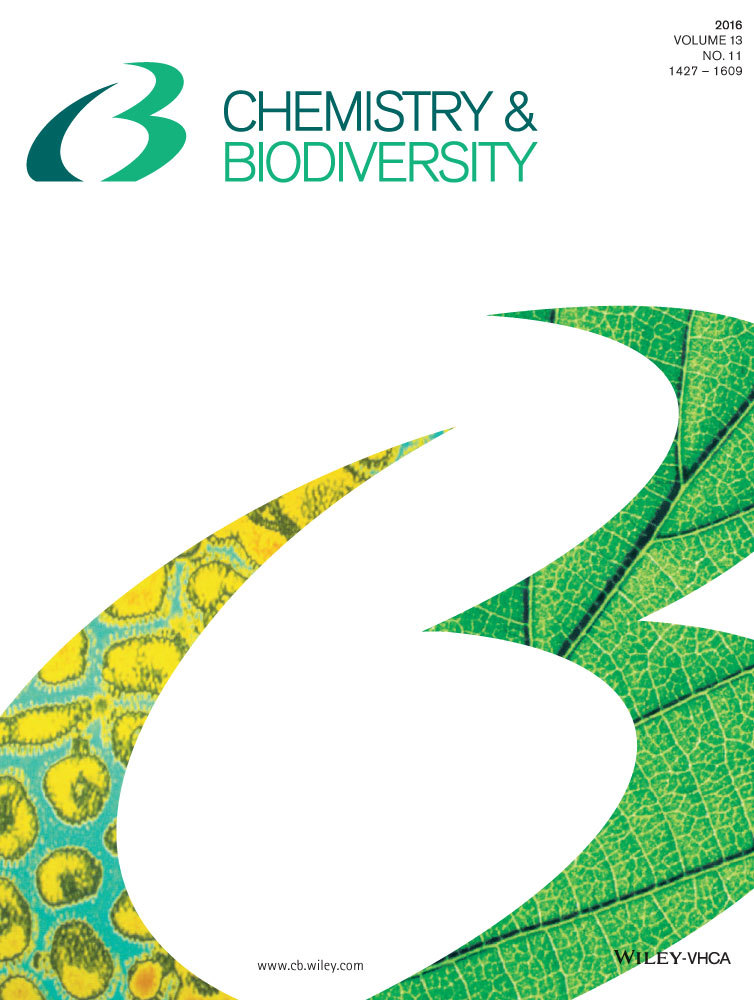Chemotaxonomic Screening of Seed Oils from the Family Saxifragaceae and Comparison with Data on Seed Oils from Grossulariaceae Obtained from Literature
Abstract
Seeds of 25 members of the family Saxifragaceae, 1 × Astilbe, 1 × Darmera, 1 × Leptarrhena, 1 × Tellima, 3 × Mitella, and 18 × Saxifraga were investigated regarding oil content, as well as composition and content of fatty acids and vitamin E active compounds. The results were compared with results obtained from literature for members of the genus Ribes belonging to the closely related family Grossulariaceae to find chemometric differences between the different genera and between members of the family Saxifragaceae and Grossulariaceae, respectively. Members of the family Saxifragaceae are dominated by high amounts of linoleic and α-linolenic acid which together account for about 80% of the total fatty acids. While α-linolenic acid is characteristic for members of the genus Saxifraga, in other genera, linoleic acid is predominant. In comparison to members of the family Saxifragaceae members of the family Grossulariaceae also contain γ-linolenic acid and stearidonic acid which allow a significant differentiation between both families. By principle component analysis, members of both families were divided into three distinct groups, i) species with a high content of α-linolenic acid (genus Saxifraga), ii) species with high amounts of γ-linolenic acid and stearidonic acid (genus Ribes), and iii) species with higher amounts of linoleic acid (other members of the family Saxifragaceae). The composition of the vitamin E active compounds was characterized by a high content of γ-tocopherol in most members of the family Saxifragaceae, but no chemotaxonomic relevance.





